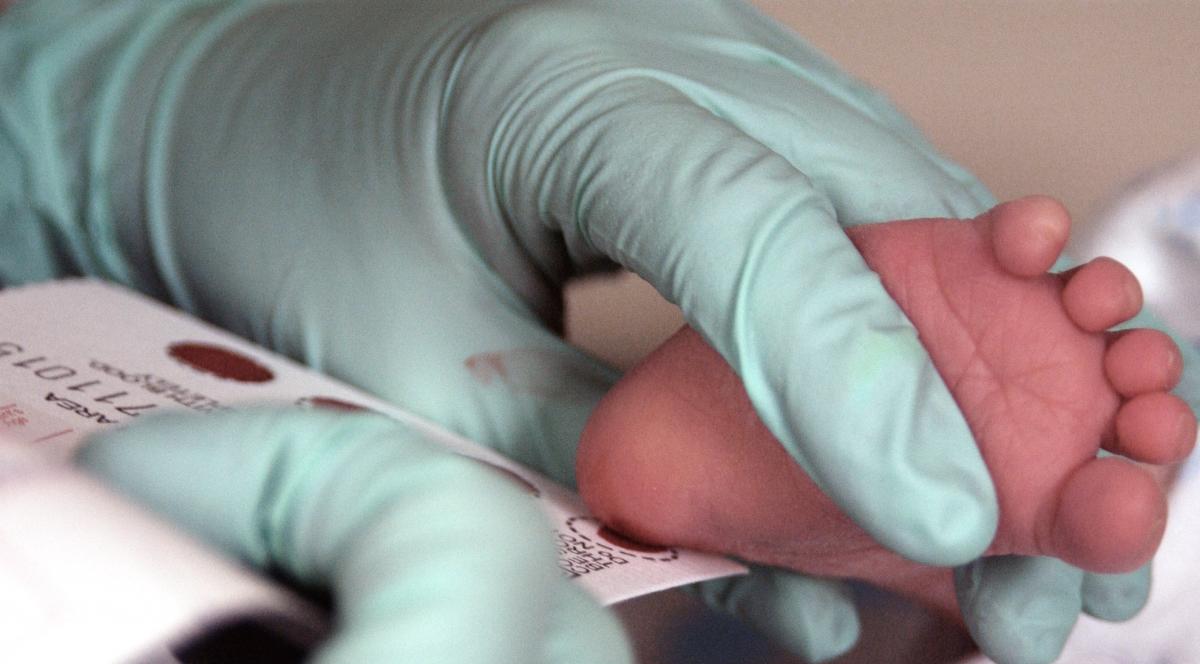Blog and News
Blog & News
Hot Topics
From The Director's Desk
-

Image: A doctor conducts a heel stick test on a newborn.
Recap of the 2012 SACHDNC Annual Report
Earlier this month, the Secretary's Advisory Committee on Heritable Disorders in Newborns and Children (SACHDNC) released its annual report. The Committee, which is tasked with advising the Secretary of Health and Human Services on policies and advancements that impact children and newborns at risk for or impacted by heritable conditions, highlighted a number of its 2012 activities and provided thoughts on future endeavors in this report. The following are just a few examples of the Committee’s work over the last year. For the full report, see 2012 SACHDNC Annual Report.
Condition Review Matrix
Over the past year, the Committee updated the matrix used to help develop recommendations regarding the addition of heritable conditions to the Recommended Uniform Screening Panel (RUSP). One of the important roles of the Committee is to review conditions that have been nominated to the RUSP. These recommendations not only impact what conditions states choose to screen for, but also research into screening methods and accessibility to treatment (for more information on the nomination process, read The Secretary's Advisory Committee on Heritable Disorders in Newborns and Children). The revisions to the matrix add a more formal assessment of the capacity of state programs to screen for a condition and the appropriateness of screening from a public health perspective. As more conditions are nominated for inclusion on the RUSP, it is important that the process to evaluate these nominations remains transparent and continues to evolve.
Point of Care Screening
The Committee submitted a report titled “Implementing Point of Care Newborn Screening” to the Secretary. Point of Care (POC) screening refers to any type of screening, such as pulse oximetry or hearing screening, that can take place at a newborn’s bedside. Such advancements in technology allow for the opportunity to see both earlier diagnoses and diagnoses of more conditions than are included in current screening panels. While early detection is always the goal of newborn screening, appropriate infrastructure with mechanisms for tracking and evaluation are needed to ensure POC screening overall can be integrated effectively into newborn screening programs.
50th Anniversary of Newborn Screening
2013 marks the 50th anniversary of the start of newborn screening as a state mandated program in the United States. The Committee supported initiatives of organizations that raise awareness about screening throughout the year, particularly coordinating with the efforts of the Centers for Disease Control and Prevention (CDC) and the Association of Public Health Laboratories (APHL). The Committee has provided a platform for a range of stakeholders to discuss and coordinate efforts in highlighting the great successes of newborn screening throughout the past five decades.
Looking To The Future
The Committee is focusing on a number of projects and initiatives in the upcoming year. One project is to review the panel of newborn screening conditions to assess if some screens might be more suited for childhood than the newborn period. As this review proceeds, there will be more discussion on the infrastructure needs for education, detection, and treatment of these conditions. The Committee will examine how technology develops and impacts current and future laboratory practices. Additionally, efforts are underway to create a framework to better understand the outcomes of newborn screening, using sickle cell disease as a test case. Lastly, the Committee will explore the impact of the Affordable Care Act on newborn screening, both as a system and for those individuals identified with a condition.
This report highlights how newborn screening is advancing and the current issues impacting all stakeholders. In all of these areas, it is key that parents and health professionals have access to up-to-date information and strategies that can not only keep babies healthy but also support the newborn screening system as a whole. Last year was a productive and informative year for the SACHDNC, and this year is shaping up to be even more impactful.
Ask an Expert
Have a question that’s not answered on Baby’s First Test? Send it to our experts.
